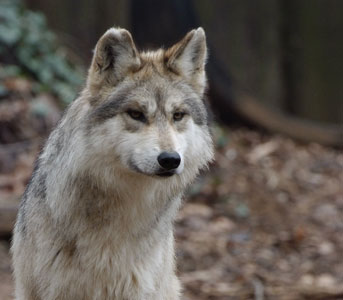20
Sep
Op-Ed: Choosing Love – The Intersection of Science and Wonder Can Save Species

This summer, the International Union for the Conservation of Nature announced that the western black rhinoceros was officially extinct. The subspecies of African rhino had last been spotted in 2006. According to news reports, poaching and a “lack of conservation” were to blame for the rhino blinking out of existence.
It was just one of the many news stories I flipped through that day and hardly processed. Later, after shutting down the day’s news and noise, I lie down in darkness and thought, “Shit.”
Wait, what does this have to do with New Mexico?
This place is magical. It hosts an amazing breadth of species—from bleached earless lizards in the dunes at White Sands to the marmots and pikas guarding the trail to Wheeler Peak, the state’s highest mountain. Although stretches now dry during the summer, the Rio Grande’s riparian corridor supports hundreds of species, including hummingbirds that zip along the river edge and the javelina and mountain lions that skulk through Bosque Del Apache National Wildlife Refuge.
But we also host species struggling to survive for any number of reasons. According to the New Mexico Department of Game and Fish, 25 now-rare fish species are protected under the state’s Wildlife Conservation Act. Consider the Zuni bluehead sucker. Thanks to soil erosion in the watershed—due to logging and overgrazing—and an attempt to rid the streams of non-game fish in the 1960s, by the 1990s, the fish’s habitat had shrunk to less than 10 percent its historic range. To survive, the fish have tried moving further and further upstream.
Even the iconic Rio Grande cutthroat trout only occupies 12 percent of its historic range. The fish aren’t good at competing with brook and brown trout; they interbreed with rainbows. Over the past few years, federal, state and tribal agencies have also been trying to figure out how the cutthroat might fare in a warming climate.
Everyone knows the story of the Mexican gray wolf. By the mid-20th century, the species had been extirpated from the United States. In 1998, the US Fish and Wildlife Service and its partners began reintroducing the wolves to Arizona and New Mexico. According to the most recent annual population estimate, a total of 75 now live in the two states; 38 are in New Mexico. (That’s not even two classes of kindergarteners for anyone requiring data visualization.)
In a novel, The Dog Stars, published last year, Peter Heller describes life in the post-apocalyptic West. The man has lost his wife, his world, even the Colorado trout streams he flyfished when life was normal. The man laments, wishing one sleepless night he had something to go home to: “But who’s kidding whom?” Heller writes. “Melissa is not coming back, the trout aren’t, and neither is the elephant nor the pelican. Nature might invent a speckled proud coldwater fighting fish again but she will never again give the improbable elephant another go.”
It’s only a novel, of course. But those two sentences set me back. That world haunts me.
Recently, I asked Andrew Todd, a US Geological Service research biologist who works on cutthroat trout, what it matters if the fish survive. Who really cares if cutthroat trout are replaced by brooks, browns or rainbows? He mentions biodiversity and ecosystem functions; he explains that if the fish ends up being protected under the Endangered Species Act, private landowners and management agencies will have to consider the fish’s health before developing new projects. The recovery of a species has everything to do with science, technology, management and regulations.
But it’s deeper—and simpler—than all that. “From a fundamental standpoint, it’s a super pretty fish,” Todd laughs.
“As humans, it’s our responsibility to try and keep as much of the diversity around as we can,” he says. “At the end of us being done, if all we’ve got are cockroaches and pigeons, are we in a good place? Have we lost something that makes this place special?”
But we’re not there yet. I’m not tallying numbers to invoke despair or helplessness. Rather, it helps to know what’s at stake when we choose to avoid thinking about climate change or when the most cynical among us place profit over protection and personal gain over the good of the community—and that includes the natural community, too. Whether it’s pretty fish or howling wolves, I think it’s worthwhile to choose knowledge, love and wonder. The outcome is certainly worth it, and the journey is one that can inspire us all to sleep at night.
This Op-Ed appeared in the Santa Fe Reporter on September 17, 2013.
________________________________________________________________________________________________________________________________________________
Click here to join our email list for Mexican gray wolf updates and action alerts.
Visit us on Facebook here.
Click here to join our email list for Mexican gray wolf updates and action alerts.
Visit us on Facebook here.



